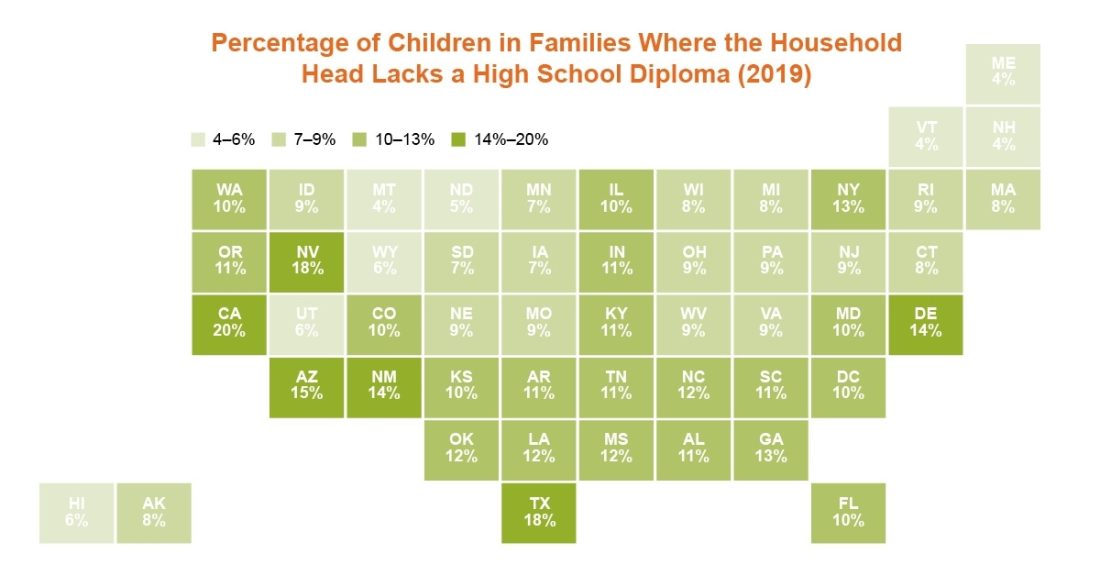In 2019, Kids More Likely Than Ever to Live With Educated Parents

Just 12% of kids in the United States in 2019 lived in households where no parent held at least a high school diploma, according to the latest American Community Survey data. This is the smallest share ever of children whose parents lack an essential credential for being able to advance in careers and provide for their families.
Nevertheless, persistent racial and ethnic disparities underscore the need for policymakers to continue to think about ways to ensure child and family well-being.
The most recent analysis of American Community Survey data by the Population Reference Bureau indicates that the percentage of children whose parents do not have a high school diploma equivalent or higher fell from 13% in 2018 to 12% in 2019. This figure has been slowly declining for years but had held steady between 2017 and 2018.
The encouraging news is tempered by an especially significant disparity between Hispanic or Latino families and the national average. In 2019, 29% of Hispanic or Latino children were growing up in settings where no parent in the household had a high school diploma or its equivalent, limiting their earning potential. The figure for American Indians (17%) was also greater than the overall national share. White children (5%) were least likely to have no parents with a diploma.
The data also reveal different conditions among the states for Hispanic or Latino children.
In four states for which data were available for 2019 — Florida (18%), New Mexico (18%), Hawaii (9%) and West Virginia (5%) — fewer than one in five Hispanic or Latino children lived in a household where no one held a high school diploma. This was also true in Puerto Rico (12%).
However, in Alabama (41%), North Carolina (39%), Tennessee (39%), Georgia (38%), Maryland (36%), Nevada (35%) and Arkansas (35%), more than one in three Hispanic or Latino children lived in such settings.





